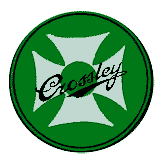At the start of the 1930s the car range consisted of the large 20.9 originally introduced in 1925 as the 18/50, and the 2 litre 15.7 from 1928 with its Sports two litre companion.
"a refined roomy car with fine all-round performance" - The Golden
The 20.9 in 1931 got a revised chassis and changed its name to the Golden and continued in theory until 1937 although few were made after about 1933. In 1931 four body styles were listed priced at a not inconsiderable £1050 for the limousine, £1075 for the enclosed landaulette and £795 for the aero or the fabric saloon. The long wheel base variants became known as the Super Six. By 1934 the range seems to have been simplified to the Golden saloon at £575 and the Super Six limousine at £875. About 100 of all variants were made.
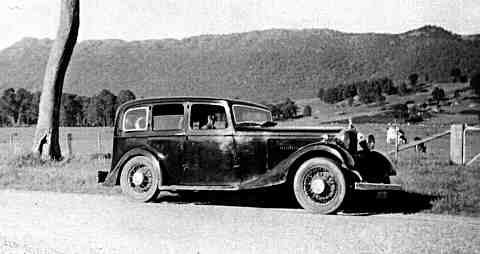
This car still survives. Photo - Peter Jones
Since it was first introduced various modifications to the engine had increased its power and when The Motor tested a Fabric Saloon in 1930 describing it as "combining efficiency with refinement", they climbed the hill out of Ashbourne in Derbyshire in top gear at a minimum of 25 mph in spite of being "baulked by a flock of sheep". A maximum speed of 72mph in top gear and acceleration (in top gear) of 0-50 mph in 25 seconds was achieved with 15.5 mpg attained overall in the test. The car weighed just over 1 3/4 tons.
"motoring refinement at moderate cost" - The Silver
The 15.7 in 1930 gained a centre gear change Warner gearbox and Perrot-Bendix brakes and became known as the Silver sharing its 10 ft 3in chassis with the Golden. It continued until 1934 and was available as the £545 saloon de-luxe or the Sportsman's Coupe at £550. As was the fashion at the time its four speed gearbox featured twin-top gears with a "silent third". Top speed was now quoted as 70mph.

supplied to the Governor of Nyasaland.
(A tourer was never listed by Crossley on the Silver chassis)
In its final form in 1933 it became the Super Silver now using the Sports Saloon engine and gaining a chrome plated radiator with thermostatic shutters. Fourteen of these were built and one survives.
The Sports two litre which was last listed in 1931 could be had as a £695 fabric saloon or a £625 open tourer.
"for the more discriminating light car user"- the 10hp range
The big news from Crossley came in 1931 with a "leaked" story that they were, at the Olympia Motor Show, to enter the small car market with a 10hp model designed by W T Wishart. The 1120cc engine was not a Crossley design, coming from Coventry Climax, and featured overhead inlet and side exhaust valves. The same engine was used by Triumph, Morgan and others. Production commenced in 1932 with a family saloon, sports saloon, sports tourer and coupe available with prices ranging from £265 to £310. Autocar tested a saloon and were impressed by its "beautifully finished woodwork" and its top speed of 67 mph. In its test of the tourer Motor Sport found it capable of 68mph, describing the acceleration as "lively" but complained about the suspension being too springy. The sports version was fitted with twin carburetors.
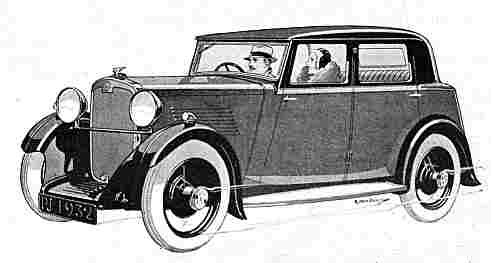
Three cars were entered in the 1932 RAC Rally by C J Joyce, of London's Pass and Joyce car dealers, with a new style of bodywork to his design made by James Young and won the Autocar Trophy for best coachwork on a light car. One car was driven from London to Edinburgh in the "amazing time of 8 hours 25 minutes" and on his arrival at the finish in Torquay the "comfort and driving ease may be judged by the fact that Mr Joyce , instead of going straight to bed as did most competitors, was able to go and play a round of golf". This 4 light saloon with a boot went into production at £325 (sliding roof £10 extra) and became known as the Torquay after the rally. Gordon Macandrew & Co, Crossley's Edinburgh distributor, entered the production prototype in the 1932 Scottish Rally and also won its class. In November a 6 light model was announced, without boot, and was called the Buxton after a car won the Buxton Trophy for the best rally performance for a car starting in the town. For 1933 a pre-selector gearbox was offered as an option for £20 extra and in 1934 the earlier 10hp models were dropped leaving only the Torquay and Buxton listed.
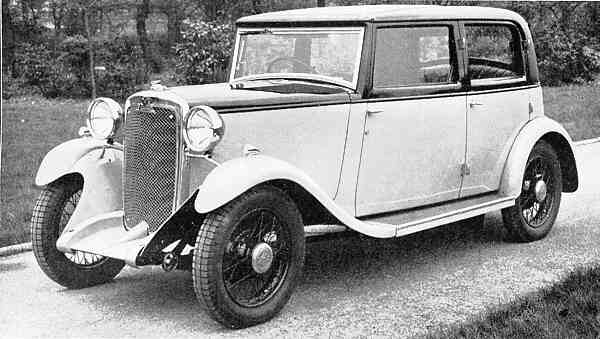
An open sports model had appeared earlier in the year with a sleeved down, tuned engine using twin inlet valves and a shorter chassis and was called the Vernon-Crossley after the racing driver Vernon Balls who ran a team of 3 cars. It was advertised as capable of 80 mph. Cars were entered at Brooklands and for the TT but without success. One of the cars survives, with a modified body and was still being campaigned into the 1960s.
In line with the designations of the larger cars the 10hp range was also known as Quicksilver. About 1600 were made.
"decidedly attractive" - the Regis
By the mid 1930s the Torquay and Buxton were looking old fashioned and so Gordon Macandrew took action by getting C F Beauvais of the Avon Motor Bodies, who was later to join Crossley Motors as chief designer, to design new coachwork. Crossley adopted a conservative rendition of this into production in 1935 as the Regis, which was mechanically very similar to the previous Tens but with a modified chassis frame and lower and longer coachwork. The wheel diameter dropped from 18 to 16 inches. However, in the end very few of the Crossley version were made as the paying public preferred the original Beauvais design which this was made mainly as a saloon but also as a tourer with prices ranging from £335 to £365. The new car was heavier than the old "Tens" and the performance suffered so a six-cylinder "Regis 6" 1500cc engined version rated as a 12hp, and only distinguishable from the four-cylinder externally by a different grille, also appeared. This was later also available as a 1650cc model. The "six" was tested by The Motor in 1936 who found it "A lively car which is easy to drive. Well planned coachwork and comfortable springing are features". Performance figures measured were a maximum of 66mph with a 0-50 time of 25 seconds. Fuel consumption was 21-25 mpg.
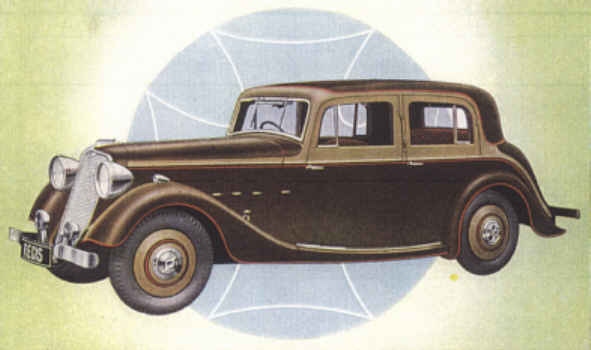
At least one special bodied tourer with handle operated hood was made by Tickfords priced at £365 for the 10hp and £410 for the 12hp. A separate locally bodied range was sold in Australia.
Total production of all models of the 10 hp Regis was about 350 and the 12hp about 450.
A strange diversion - the Streamline
A real oddball was the Crossley Rear Engined Streamline based on Burney patents of which 25 were made in 1934. One of Burney's ideas was that heavy items should be carried at each end of the car. The engine at the rear accounted for one end and, unlike the original Burney, the radiator and battery compensated at the front. The car used the Silver's 2 litre engine with Wilson preselector gearbox. It also retained Burney's idea of storing the spare wheel inside one of the rear doors which cannot have helped the body structure. To assist the streamlining the rear track was 13 inches less than the front. The Motor testers got a maximum of 78mph and could have gone faster except for repair work at the Brooklands track. On the styling they commented "Whether or not the resulting appearance is pleasing to the eye is a matter of individual taste".
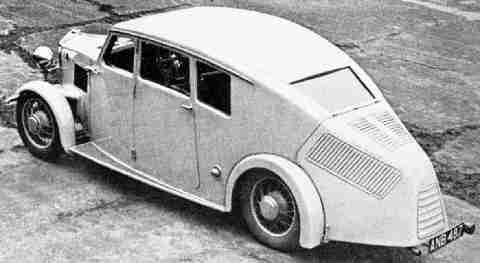
At least two examples survive, one, in private hands and the other in the National Motor Museum at Beaulieu.
It was a strange looking car and so unconventional that it proved hard to sell. The 1934 price of £750 was reputed to be loss making so the reduced 1935 price of £395 seems to be rather desperate.
"refined performance" - the 2 litre Sports Saloon
Even though by the mid 1930s most car production was restricted to the 10 and 12 hp models, development had not stopped on the larger cars and in 1934 the aluminium bodied 2 litre Sports Saloon with new chassis and running gear and modified six-cylinder engine was launched. An ENV 110 pre-selector gearbox was used. The Motor found it "speedy refined and comfortable" capable of 76mph with a 0-60 time of 25 seconds in 3rd gear. An overall mpg of 17.4 was recorded.
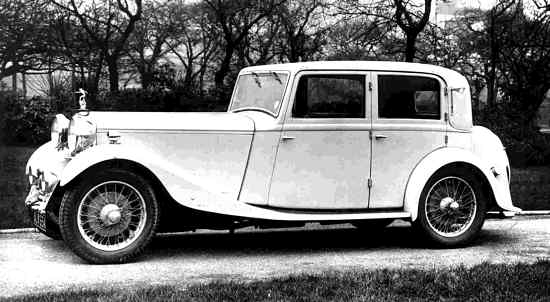
At £695 it was expensive and only about 25 were made of which a remarkable 3 survive including the Crossley bodied prototype. At least one was exported to Australia with unknown coachwork. Apart from the prototype, which was Crossley bodied, all the bodies were made by London coachbuilder Ranalah.
The final production car - the 3 litre Sports Saloon
What turned out to be Crossley's last car design to enter production was a 3 litre Sports Saloon. This involved fitting the Golden engine and a larger type 150 ENV pre-selector gearbox into the 2 litre Sports Saloon chassis and was shown at the 1934 Motor Show priced at £795. No official photographs of the car seem to have been taken with the sales brochure using the picture from the 2 Litre publication.There is some evidence that the only difference between the two cars was the engine. It made a final appearance, along with the Regis, at the 1935 show with a new 4 light body by C F Beauvais but few were sold.
Estimates of production figures vary between 10 and 20 cars with possibly 5 going to Australia in chassis form.
One survives in Australia but no longer with the original body.
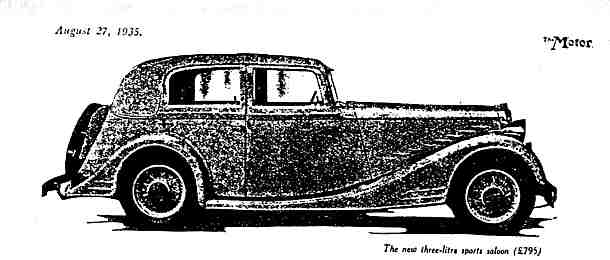
The last car design - the 26/90
There was a final design, the 26/90, one of which was built in 1937 and fitted with a large black saloon body and possibly as a temporary measure, a 3569cc Studebaker engine. There is some evidence that after their work on the Regis and 3 litre, Avon were also asked to design a body for this car but production never went ahead.
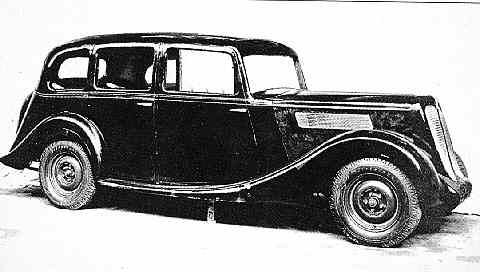
It was last known in the 1950s when owned by a Major Lyon and carried a 1930s Manchester registration. Nothing has been heard of it for many years. Does it still exist?
The end of car production
Crossley Motors never officially gave up making cars. Car production was suspended in 1937 officially to make room for War Department work but in reality it seems to have slowly died out. The last attendance at the British Motor Show was in 1936 but amazingly a stand was taken at Melbourne in 1938. One description of the end was as "long and gradual and every now and then after a seemingly final lapse, an odd order or two would trickle in when a select band of brethren would repair to a corner of the works and there lay down an appropriate number of frames, which would eventually emerge from the factory as complete motor cars." (Geoffrey Hilditch -1976?).
With many other old names such as Riley and Triumph going into receivership at the time, at least Crossley cars were spared this indignity.
